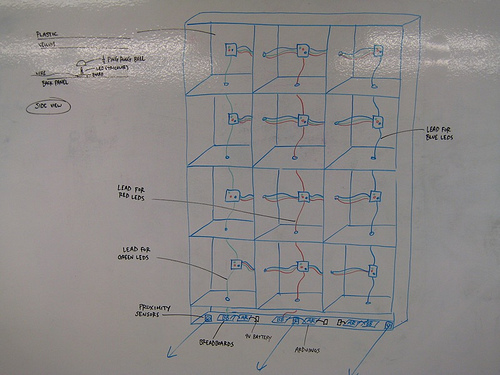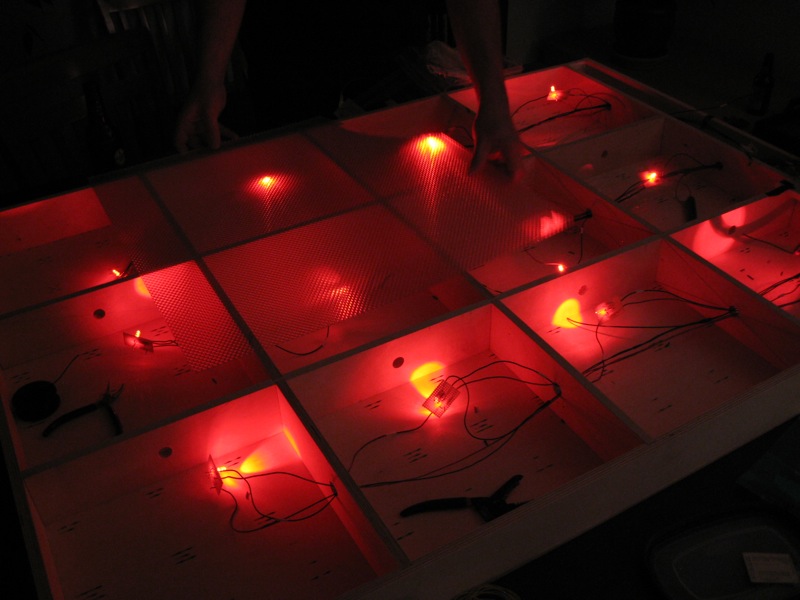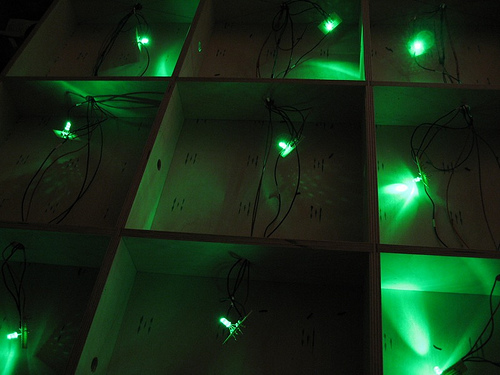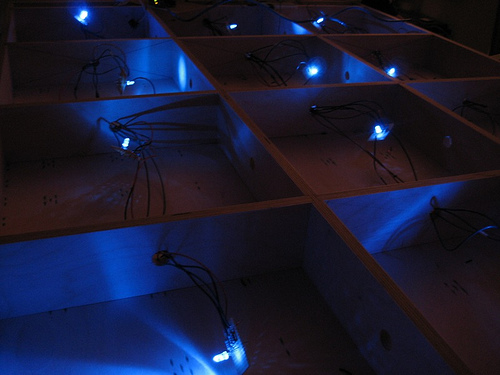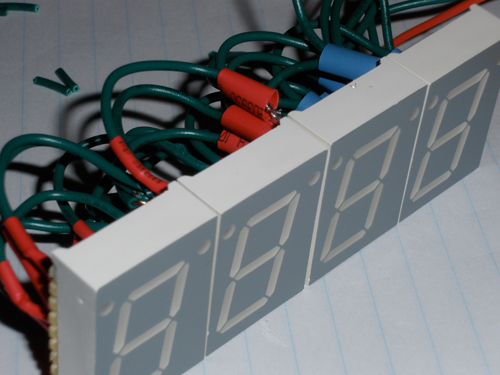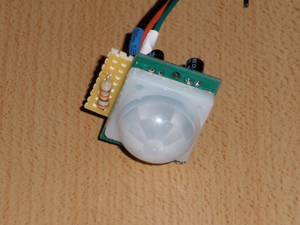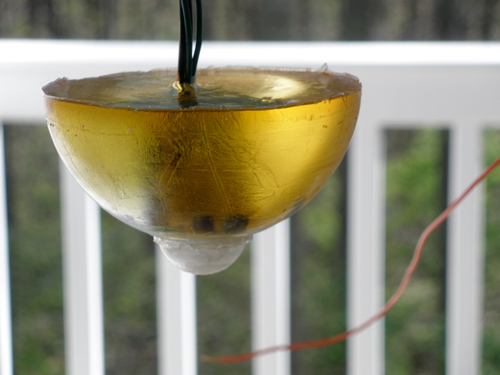Arduino Fun
So many wires, so little time
Propinquity
I worked with a team to create an interactive light installation designed to encourage playful exploration. The display changes based on the viewer’s proximity and multiple people can work together for even more dynamic effects.
Propinquity consists of 12 cubes each containing one superbright tri-color LED. Three Arduino boards control the lights, with each board controlling a single color. Each board is also connected to a Maxbotix ultrasonic range finder attached to the bottom of the piece. As people approach Propinquity, the ultrasonic sensors detect their proximity and trigger the lights in a predefined pattern based on distance. Because each sensor controls a different color, a variety of patterns can be created. The key to Propinquity is that the interaction is not one-to-one. Viewers realize that they influence the pattern but it is not immediately clear in what way. As more people join the interaction, they have to work together to figure out the patterns.
Clock Says…
As an experiment with Arduino and Processing, I created a clock that reacts to the viewer’s motion. I constructed the clock with four 7-segment LEDs (the numbers), two tri-color LEDs, and one PIR motion sensor, all embedded in a resin shell. I also created a Processing sketch (bubbles) that updates based on the motion detected.
The clock itself was designed to be, well, obnoxious. If the clock detects any movement, it turns off. You have to stand perfectly still before it will show the time. Meanwhile, any motion detected affects the color and size of the bubbles displayed in the Processing sketch.
The biggest lesson? It takes A LOT of wires to create a clock.

